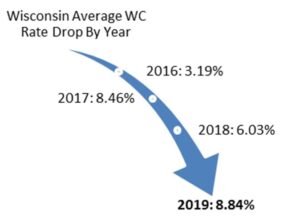How to balance speed, accuracy in commercial lines underwriting

“I feel the need…the need for speed.” This quote from the movie Top Gun can easily apply to insurance. It started in personal lines, as auto and home insurers competed for faster ways to deliver quotes and bind coverage. And now it’s impacting commercial lines, as carriers look to underwrite complex risks more quickly to meet agent and policyholder expectations.
But how fast is fast enough? It’s clear that insurers need to be fast to be competitive. Turnarounds of weeks or days to evaluate, quote, and bind policies don’t really cut it anymore. But underwriting accuracy is just as critical. If a carrier can’t get accurate risk-evaluation information, it doesn’t matter how fast the technology works. Consider this scenario: an underwriter at an insurer uses an automated data-delivery solution to prefill underwriting questions. The data solution can populate answers in five seconds, but when the underwriter reviews the prefilled answers, they notice there are errors or inconsistencies. The underwriter then must spend hours doing manual research to find the correct information.
In the quest for accurate underwriting data, carriers must balance speed and accuracy to deliver precise risk evaluation, with the expectation and result of comprehensive and fair premium pricing for both the insurer and its policyholders.
For insurers looking to implement intelligent data-acquisition technology to improve commercial lines underwriting, here are some tips for appraising solutions that deliver the right combination of accuracy and speed:
1. Understand the long-term plan. There is no perfect data-delivery technology. By its very nature, it should always be evolving. The dichotomy between speed and accuracy for data assets is not going away anytime soon, so explore how the solution is built for continuous improvement — as it adapts to the changing market and its data requirements.
Data privacy and bias are key concerns in the industry and new regulations are being passed with more on the horizon. California’s Consumer Privacy Act gives consumers control over the personal information businesses collect on them, and how it is used or shared. The American Data Privacy and Protection Act, a proposed federal law giving consumers control over their information, is making its way through the U.S. Congress. Does the solution have a plan in place to meet compliance standards with current regulations as well as ones that could become law soon? Is it able to provide transparency into the information used to populate data fields?
Making sure the data-delivery technology can still perform with speed and accuracy — while adjusting to potential changes in regulations — can save you from having to search for another solution again in the near future.
2. Stay flexible. Time means money, but not every second saved is a dollar earned. This can be true when it comes to underwriting accuracy. Consider the tradeoffs between speed and the amount of quality data. While you might think you need data in eight seconds or less, you may find that you gain significantly more risk insight in 15 seconds. One approach to evaluate the tradeoffs might be to run realistic scenarios for different lines of business and timelines, enabling you to compare the amount and quality of data received. You may find that taking a little longer might ultimately supply better underwriting insights, processes, and results.
3. Seek informed partners with versatile solutions. With a steady influx of new technologies, insurers often have multiple options for improving business efficiency with experienced and adaptable solution partners. Consider technology companies that can not only speed up your underwriting processes, but also add next-level precision and insights to your risk-assessment workflows. Can the solution expand the data fields you have been using for underwriting? Does the platform offer immediate transparency into the sourcing of data? Can it be quickly customized to provide new or additional classification and exposure questions you could or should be asking? You may have been using the same risk attributes for a long time, and a knowledgeable partner may offer additional attributes to advance your underwriting proficiency.
4. Focus on principled technology enablers. When it comes to data for risk assessment, it can be easy to get immersed in the technical side of things. But don’t forget the moral element. As we all know, insurance offers society and people (plus what they hold dear) protection from unforeseen risk. The insurance industry maintains an ethical obligation to do the right thing for its policyholders, and technology solutions must enable this virtuous mission and purpose. Therefore, ask solution providers values-based questions, such as: How do you overcome conceivably unconscious bias in your algorithms? Do you have processes in place to protect personal information? What are the key characteristics of your ESG policy?
In underwriting, both speed and accuracy are important. But what’s the right balance? Finding solutions that can provide risk-assessment information in a timely manner is critical. Just as important is a focus on upgrading your data collection — by expanding data sources and having better access to deeper levels of exposure information, in turn adding more efficiency, accuracy, and integrity to the overall underwriting process.



